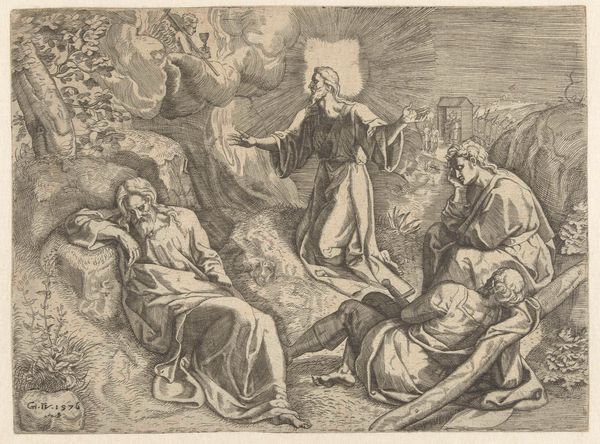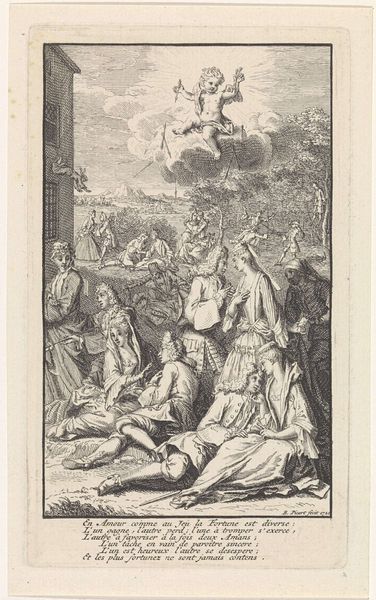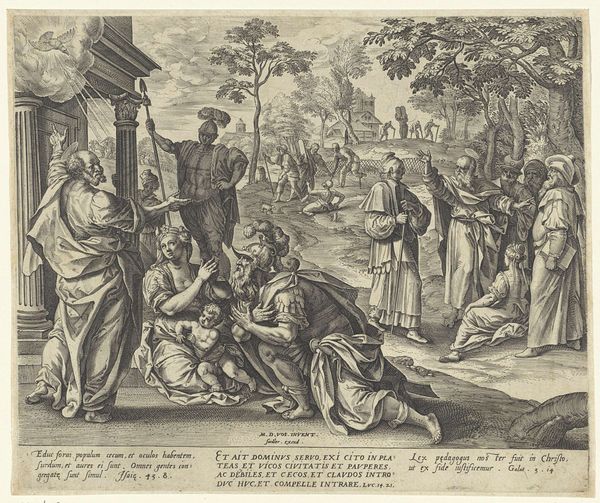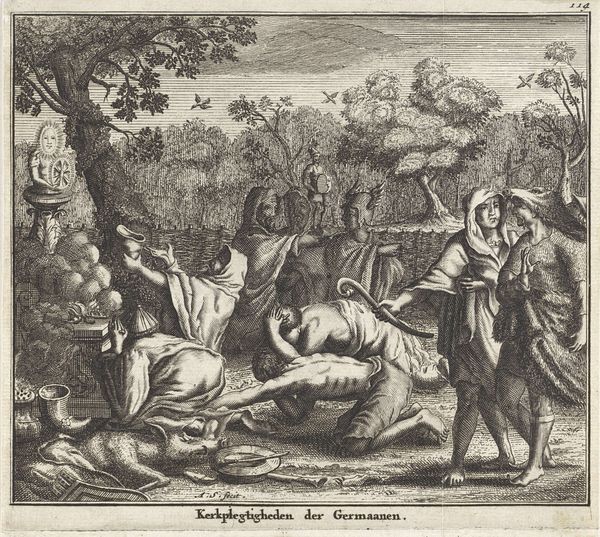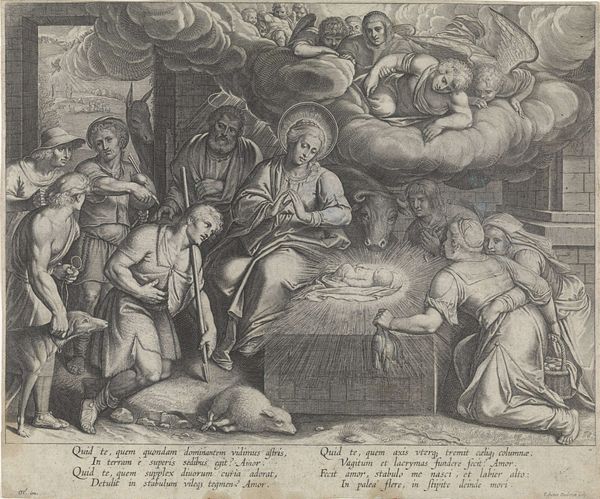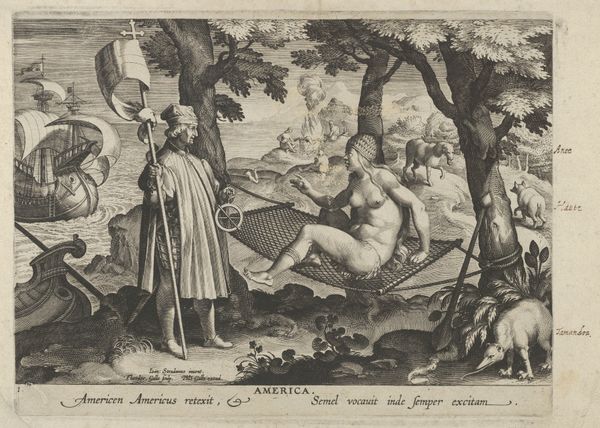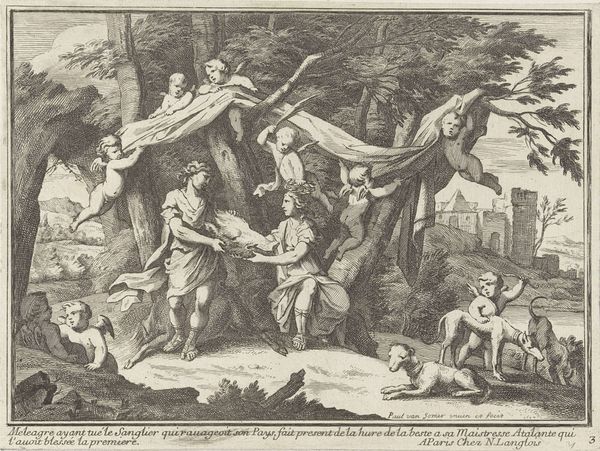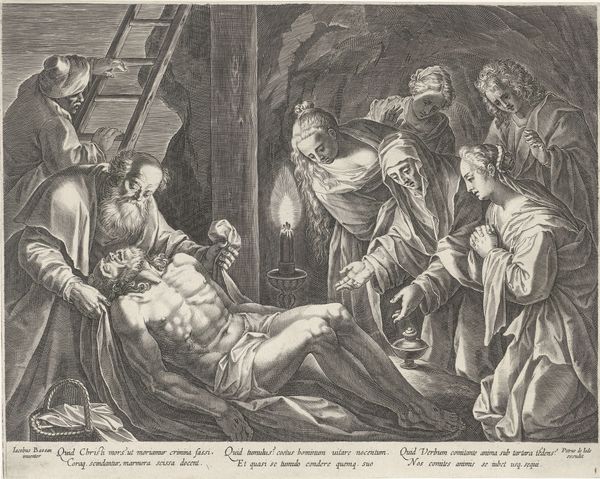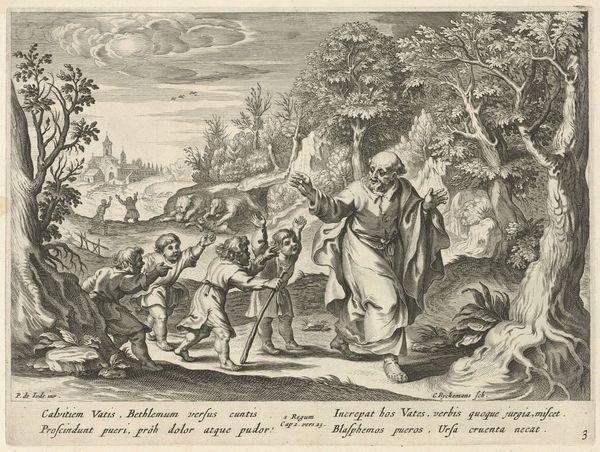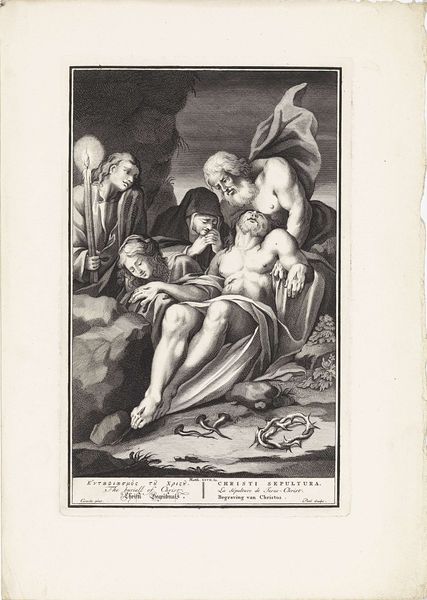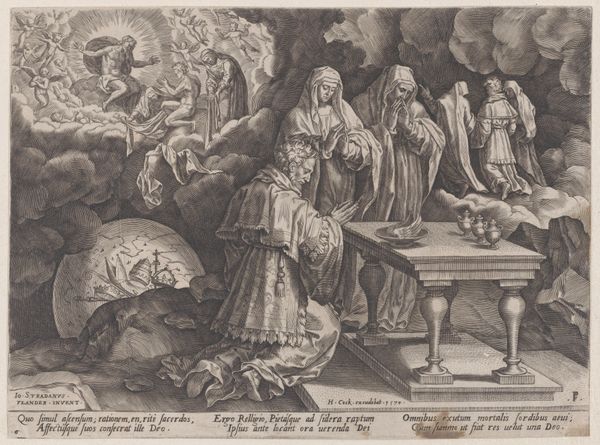
print, intaglio, engraving
#
narrative-art
#
baroque
# print
#
intaglio
#
history-painting
#
engraving
Dimensions: height 179 mm, width 220 mm
Copyright: Rijks Museum: Open Domain
Cornelis Galle I made this engraving, "Christus in de hof van olijven," which translates to "Christ in the Garden of Olives," sometime between the late 16th and mid-17th centuries. The image illustrates a moment from the New Testament, capturing Christ's anguish and his disciples' slumber before his arrest. Galle was based in Antwerp, a city in the Spanish Netherlands that served as a major center for artistic production and dissemination. Galle's work reflects the dominant Counter-Reformation culture of the period. The Catholic Church strongly influenced artistic output, often commissioning works that reinforced religious doctrine and moral values. Galle's detailed engraving would have been easily reproducible, and thus able to communicate and reinforce orthodox religious beliefs to a wide audience. Historical investigation of the image and the artist sheds light on the role of art in shaping religious and cultural identities. Studying sources from the period helps us understand the institutional and social forces that shaped this artwork and its reception.
Comments
No comments
Be the first to comment and join the conversation on the ultimate creative platform.
